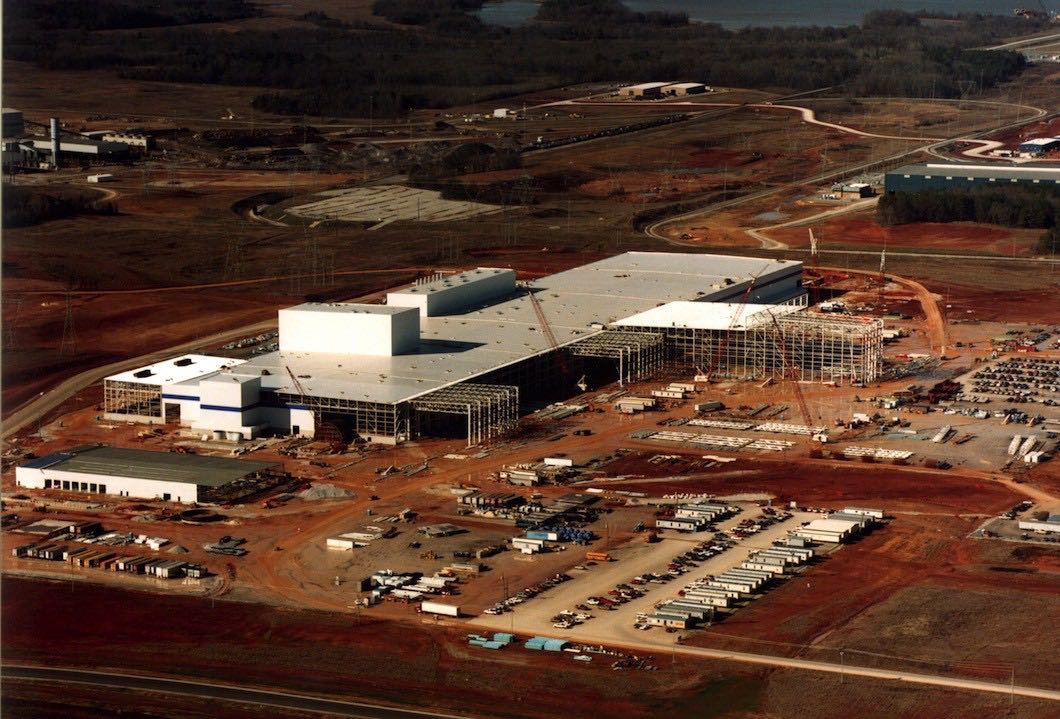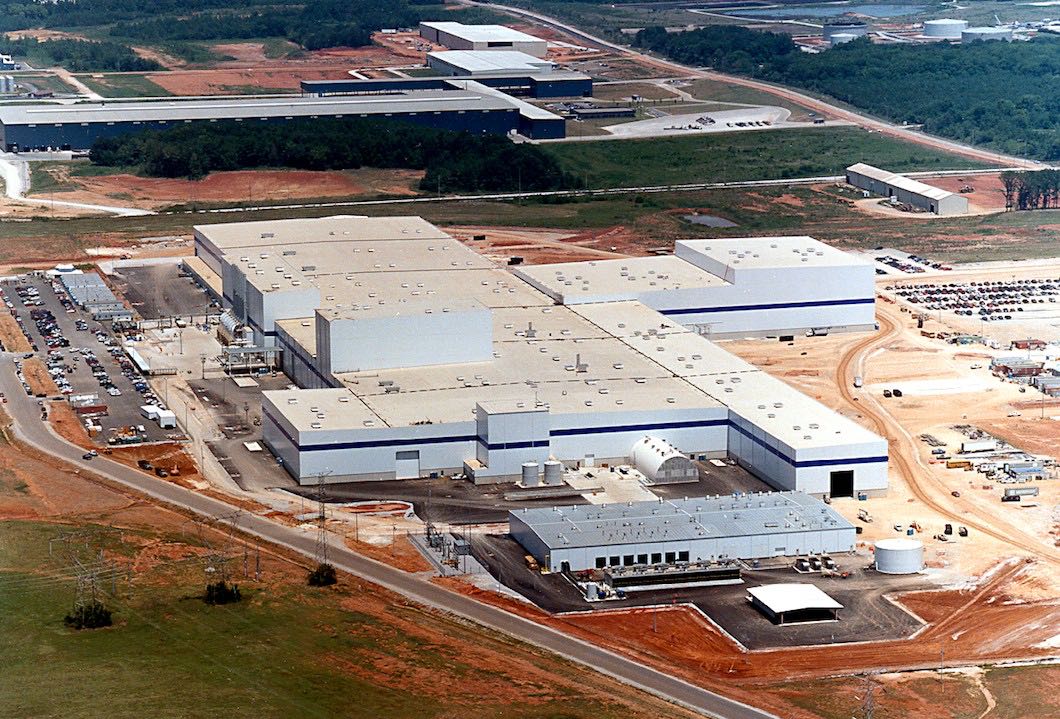Project Overview
Services Provided
- Design-Build.
- Planning.
- Development and Financing.
Location
In a spectacular evening launch on Wednesday, November 20, 2002, the first flight of the Boeing Delta IV family of rockets successfully delivered a telecommunications satellite into orbit. Major components of the rocket, including the common booster core, were manufactured in a facility designed, engineered and constructed by The Austin Company in a joint venture with J.S. Alberici Construction Company.
The Delta IV family of rockets is Boeing’s entrant into the U.S. Air Force’s (USAF) Evolved Expendable Launch Vehicle Program (EELV). The EELV is aimed at reducing the cost of space launches through revamping rocket assembly, testing and launch processes. The USAF expects the program to save the U.S. government $10-billion in launch costs — a 50-percent savings compared to launching the same military payloads on other boosters.
The Austin Company first became involved in Boeing’s Delta IV project when Boeing engaged The Austin Company to perform master planning and preliminary design for a facility that would manufacture the largest structural component of the Boeing Delta IV family of rockets, the common booster core (CBC). “The challenge in the planning stage of the project was that Boeing had not yet selected a site for the new facility and had not yet finalized its plans for designing the new series of Delta rockets,” said a project manager for The Austin Company.
In response to these challenges, Austin provided designs with a great deal of flexibility and developed concepts for several different locations throughout the country. Upon completion of master planning and preliminary design, The Austin Company initiated engineering for long-lead procurements.
Once The Boeing Company selected Decatur as the project site and design-build as the project delivery method, The Austin Company was awarded final design and construction for the facility in joint venture with Alberici Constructors, Ltd. A demanding 26-month construction schedule was driven by The Boeing Company’s strategy for their next generation booster. This meant that every aspect of the project had to be done quickly and efficiently, which mirrored the way Boeing intended to manufacture the Delta IV rocket.
With site work well underway, it was determined that the most critical manufacturing areas would be located in the center of the building, therefore, the building would be constructed from the center out to the south and north simultaneously. An extensive tunnel system was installed prior to all other construction and provided for a safe exit and a location for routing utilities.
Construction was completed in late 1999. Initial production began in February 2000 and rocket manufacturing was in full-swing by September 2000. The first common booster core assembled at the new plant was unveiled at the dedication of the Decatur facility in October 2000.
Read more about this facility on Made in Alabama: United Launch Alliance Alabama Factory Turns Rocket Science into Rockets
About Boeing’s Delta IV Family of Rockets
The Delta IV family incorporates new and mature technology to launch virtually any size medium or heavy payload into space. It is composed of five vehicles based on a common booster core (CBC) first stage. In designing the five Delta IV configurations, Boeing conducted extensive discussions with government and commercial customers concerning their present and future launch requirements. Proven technical features and processes were carried over from earlier Delta vehicles to Delta IV. New technologies and processes were incorporated where they added capability or reduced cost.
The common booster core (CBC), manufactured at Boeing’s new Delta IV facility, is 125 feet in length and 16 feet in diameter — roughly the size of a Boeing wide-body airplane fuselage. Here the CBC is rolled out of the Delta IV factory in Decatur and is prepped for its voyage down the Tennessee River and through the Gulf of Mexico aboard the Delta Mariner to its destination in Cape Canaveral, Florida.
Fast Facts
- 175 acres were developed on the 410-acre site.
- 2,004 drawings were issued for the project.
- 1,500,000 cubic yards of earth were moved to prepare the site. 4,000,000 cubic yards of earth were moved in the course of all excavations and grading.
- 14 miles of pilings were driven.
Maximum building height is 140-feet; average building height is 75-feet. - Clear heights vary from 50-feet to 120-feet.
- Largest truss member is 18-feet by 220-feet.
- 20,000 tons of structural steel were erected.
- 229,000 work-hours were required to erect the steel.
- 100,000 cubic yards of concrete were poured.
- Six cranes, each more than 250-feet high and with capacities of 250 and 450 tons, were used to lift the trusses and steel beams in erecting the building shell.
- The structure is enclosed by 296 precast panels and more than 76,000 linear feet of metal wall panels.
- More than 115 tons of bolts, carried in 10 semi-tractor trailer loads, were used in construction.
- The floor system used 35,350 cubic yards of 4,000-psi steel-fiber-reinforced concrete. Over 1,700,000 pounds of steel fibers manufactured specifically for concrete reinforcement were used.
- Pratt truss lengths up to 220-feet were used for the main roofing system.
- Jack trusses, 110-feet to 175-feet long, allow column-free flow throughout the building.
- A total of 33 bridge cranes, some spanning 220-feet and lifting up to 30 tons, were hung from the bottom cord of the trusses.
- The entire 1,500,000 SF facility is environmentally controlled and air conditioned to 72 degrees Fahrenheit, 24/7/365. Although not a strict “cleanroom” environment, the system provides a clean environment equal to Class 100,000 and Class 300,000 in many areas.
- At its peak, the construction work force numbered 1,400 workers.
- 2,000 workers were scheduled to be employed in the factory by 2004.

